Samsung Galaxy S22 Ultra vs. iPhone 13 Pro Max: Which flagship phone to choose in 2022?
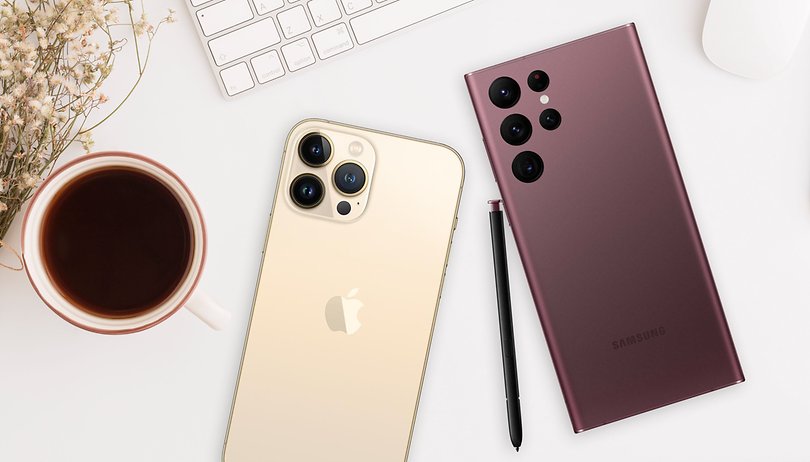

After months of leaks and teasers, Samsung finally announced its flagship phone for 2022. As with every new Galaxy S generation, the question arise: Samsung Galaxy or Apple iPhone, which phone do I choose? If you are still on the fence between the two flagship models from the biggest brands in the world, we prepared this quick comparison article.
This guide will cover the phones' main specifications, and as always, we invite you to follow NextPit on Facebook, Twitter, and Telegram to be the first to know when we publish our complete review of Samsung's new line.
Jump to:
- Prices and models
- OLED screens on both flagships
- Reference cameras for each OS
- Performance and connectivity
- Battery and charging upgrades
- S22 Ultra vs. 13 Pro Max: Special features
- Apple vs Samsung ecosystems
- Galaxy S22 Ultra or iPhone 13 Pro Max?
| Flagships face-to-face | ||
|---|---|---|
| Product | ||
| Picture | 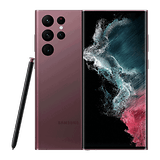 |
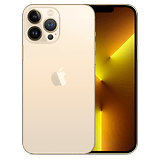 |
| Screen | 6.8-inch OLED 1,440 x 3,088 pixels (515 ppi) at 120 Hz 1,750 nits peak brightness |
6.7-inch OLED 1,284 x 2,778 pixels (458 ppi) at 120 Hz 1,200 nits peak brightness |
| SoC | Qualcomm Snapdragon 8 Gen 1 1x ARM Cortex-X2 @ 3.0 GHz 3x ARM Cortex-A710 @ 2.5 GHz 4x ARM Cortex-A510 @ 1.8 GHz Qualcomm Adreno |
Apple A15 Bionic 2x Avalanche @ 3.24 GHz 4x Blizzard @ 2 GHz Apple proprietary GPU |
| Memory | 8, 12 GB RAM 128, 256, 512, or 1024 GB UFS 3.1 storage |
6 GB RAM 128, 256, 512, or 1024 GB NVMe storage |
| Micro SD slot | None | |
| Main camera | 108 MP | f/1.8 | 1/1.33" | 85° FoV PDAF | OIS |
12 MP | f/1.5 | 1/1.65" | 1.9 µm Dual Pixel AF | sensor-shift OIS |
| Ultra Wide-angle | 12 MP | f/2.2 | 120° FoV | 12 MP | f/1.8 | 120° FoV |
| Telephoto lens | 1: 10 MP | f/2.4 | 36° FoV | 3x zoom 2: 10 MP | f/4.9 | 11° FoV | 10x zoom |
12 MP | f/2.8 | 3x zoom |
| Video | 4K at 60 FPS 1080p at 240 FPS 720p at 30 FPS Front: 4K at 60 FPS HDR recording with HDR10+ |
4K at 60 FPS 1080p at 240 FPS 720p at 30 FPS Front: 4K at 60 FPS HDR recording with Dolby Vision |
| Selfie camera | 40 MP | f/2.2 | 1/2.8" | 80° FoV | 12 MP | f/2.2 | 1/3.6" |
| Audio | Stereo Speakers No Headphone Output |
|
| Battery | 5000 mAh | 4351 mAh |
| Charging | 45W (wired) 15 W (Qi wireless) Reverse wireless charging at 4.5W |
30 W (wired) 15 W (MagSafe wireless) 7.5W (Qi wireless) |
| Resistance | IP68 Corning Gorilla Glass Victus (display & back) |
IP68 Corning/Apple Ceramic Shield (display) |
| Connectivity | 5G, Wi-Fi 6E, NFC, Bluetooth 5.2, UWB | 5G, Wi-Fi 6, NFC, Bluetooth 5.0, UWB |
| Biometric features | Ultrasonic fingerprint reader under the screen | 3D facial recognition (Face ID) |
| Dimensions & weight |
163.3 x 77.9 x 8.9 mm (6.43 x 3.07 x 0.35 in) 229 grams (8.07 oz) |
160.8 x 78.1 x 7.65 mm (6.33 x 3.07 x 0.30 in) 240 grams (8.46 oz) |
| Rating |
|
|
| Offers* | ||
As you can see above, we have yet to publish our full reviews of both phones, but we expect to have them ready in a few short weeks. Because of that, we will highlight the main differences in prices and specifications, to help you make the best possible shopping decision.
Galaxy S22 Ultra vs iPhone 13 Pro Max: Prices and models
| Samsung Galaxy S22 Ultra | Apple iPhone 13 Pro Max | |
|---|---|---|
| 128 GB | $1,199 | $1,099 |
| 256 GB | $1,299 | $1,199 |
| 512 GB | $1,399 | $1,399 |
| 1 TB | $1,599 | $1,599 |
From the table above, we can already see that Samsung pretty much matched Apple's storage and price options for the Galaxy S22 Ultra, with the same memory capacities and similar suggested prices (MSRP).
Of course, one thing to keep in mind, especially if you are reading this article months after the S22 line launch, is that Samsung phones usually have bigger price drops over the year, so don't forget to check the phone deals on NextPit.
Galaxy S22 Ultra vs iPhone 13 Pro Max: Apple inches closer on the screen
With the iPhone 13 Pro Max release in 2021, Apple finally brought high refresh-rate screens to its smartphone line. Even so, the feature already popular in even mid-range Android mobiles can be only found in the 13 Pro line, offering a high-end adaptive panel that can update from 10 times per second up to 120 times (Hertz), offering smooth screen animations.
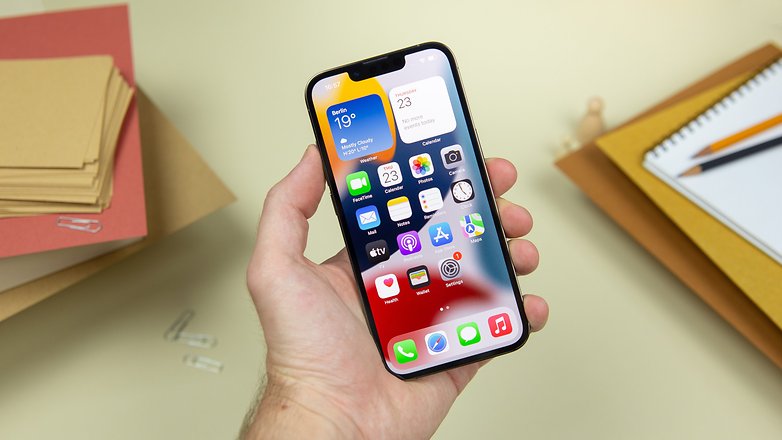
Both the iPhone 13 Pro Max and the Galaxy S22 Ultra use an AMOLED panel - called "Super Retina XDR with ProMotion" and "Dynamic AMOLED 2X", respectively - which are largely equivalent, offering deep blacks, high dynamic range (HDR) and smooth animations on the screen. Both components can vary the refresh rate according to the content, helping save some battery.
The main differences can be found in the display size - 6.8'' for the S22 Ultra, 6.7'' for the 13 Pro Max - and resolution, 1440p on the Samsung phone, and 1284p on the iPhone, which results in a higher pixel density for the Galaxy device. Samsung also advertises a 1750 nits peak brightness, which promises a brighter screen than the iPhone 13 Pro Max's 1200 nits.
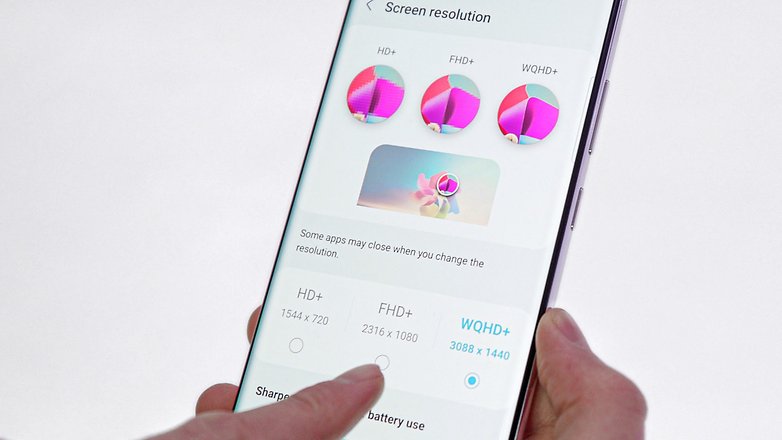
Galaxy S22 Ultra vs iPhone 13 Pro Max: Cameras
While both flagship models list similar specs at first glance in relation to their predecessors, the camera front is one of the most heated battlefields in the mobile market.
Despite bringing a triple camera system with 12 megapixel sensors, the iPhone 13 Pro Max is competitive with the S22 Ultra's quad-camera system led by the 108 MP main sensor.
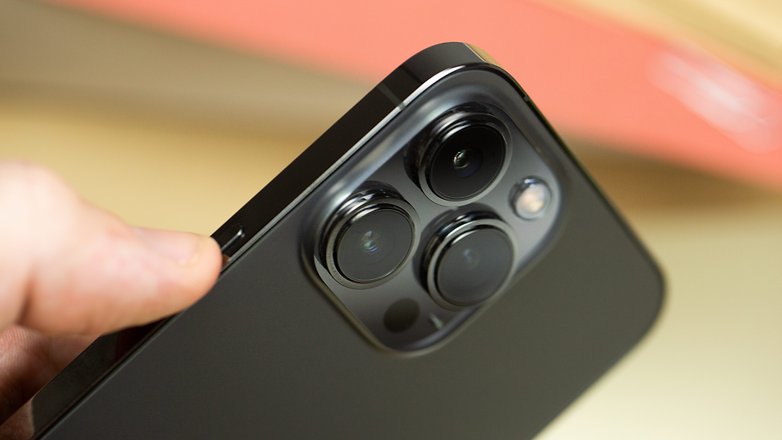
The tight integration between Apple's image processing, hardware and the operating system offers exclusive features like the Cinematic Mode, which applies a smooth bokeh (back/foreground blur) effect to videos, and Photographic Styles, which quickly applies hue, temperature, and saturation adjustments using the iPhone's SoC to save post-processing time.
Meanwhile, Samsung offers a brute force arsenal of cameras, with not only the big main 108 megapixel sensor, but also two different telephoto lenses, which allows for a 3x and 10x optical zoom in comparison to the main camera. On paper, the Galaxy S22 Ultra gives more versatility to shutterbugs, but we will only know for sure after testing the production device.
Galaxy S22 Ultra vs iPhone 13 Pro Max: Performance and connectivity
Despite packing less CPU cores and RAM capacity, the iPhone line usually leads performance tests in both daily tasks and gaming. Apple's optimization and vertical integration plays dividends here, even with basically half the working memory - 6 GB vs 8 or 12 GB on the S22 Ultra.
Regarding the S22 Ultra raw performance, we will update this category after testing Samsung's flagship in depth, but even so, most users can expect more than enough oomph for all kinds of tasks thrown at the phone.
As for connectivity options, both models are compatible with the 4G and 5G networks, and offer ultra-wideband (UWB) and NFC support. The S22 Ultra shines a bit brighter with Bluetooth 5.2 and Wi-Fi 6E support, while the iPhone 13 Pro Max is compatible with up to Wi-Fi 6 and BT 5.0.
Galaxy S22 Ultra vs iPhone 13 Pro Max: Battery and charging technologies
At first glance, the smaller battery capacity on the iPhone 13 Pro Max may look like a negative point, but that number serves to showcase Apple's efficient hardware and software integration. Samsung may point to the fact that it uses "4 nm" processors - Snapdragon 8 Gen 1 in the US, Exynos 2200 in Europe - but both SoCs found in the S22 line are made by Samsung Foundry, which is still playing catch-up to the TSMC N5 process node used by the Apple A15.
Both models should offer enough battery life for daily usage, but we will update this guide after testing the devices.
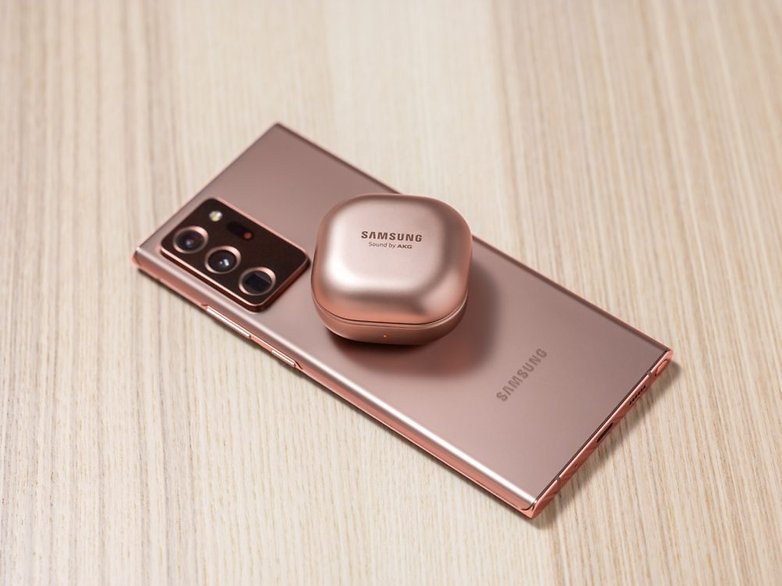
Charging, on the other hand, gives a point to the Galaxy S22 over the iPhone 13 Pro Max. While both models support wired and wireless charging, the Samsung model features a more powerful wired charging - which compensates the bigger battery in the Galaxy phone - and doesn't restrict the maximum wireless charging rating to certified chargers.
Using generic Qi wireless chargers, the iPhone 13 Pro Max recharges at 7.5 Watts, while the S22 Ultra supports up to 15 Watts. To use the same charging power with the iPhone, only with certified MagSafe chargers, which also offer the convenience of magnetic attachment for the charging cable.
Another advantage for the Galaxy S22 Ultra is the reverse charging feature which offers 4.5W to recharge other devices wirelessly. While it is designed mostly to refuel smartwatches and earbuds, it can be also used to recharge other phones in emergency situations.
Galaxy S22 Ultra vs iPhone 13 Pro Max: special features
The Galaxy S22 Ultra feature highlight is without doubt the S Pen support, while the Galaxy S21 Ultra was already compatible with Samsung's stylus, the 2022 model succeeds the Galaxy Note line by integrating the pen garage on the device, dispensing the need to buy a special case to store the S Pen.

The change should please the Note line fans, who will have essentially the same experience under a different name.
On the other side of the fence, the iPhone 13 Pro Max boasts an unmatched set of camera features, pairing Apple's knowledge in video editing to hardware features like the (very fast) NVMe storage standard. One of the highlights is the ProRes format support, which records 4K videos at up to 735 Mbps, and is found only on professional cameras.
Galaxy S22 Ultra vs iPhone 13 Pro Max: Battle of the ecosystems
Software-wise, there isn't much to choose when it comes to the iPhone 13 Pro Max and the Galaxy S22 Ultra. Running iOS 15 and Android 12, respectively, both are their systems' most widely available devices in the world - Google sells Pixel phones in less than a dozen countries, and only OnePlus and Motorola/Lenovo can be found in the US among the Chinese brands, etc.
After years of criticism towards Android updates, Samsung announced that most of its phones will receive five years of security updates, and four Android version updates for its flagship devices. That is still shy of Apple's unofficial policy - which has been updating devices for at least five years - but considerably better than most Android brands.
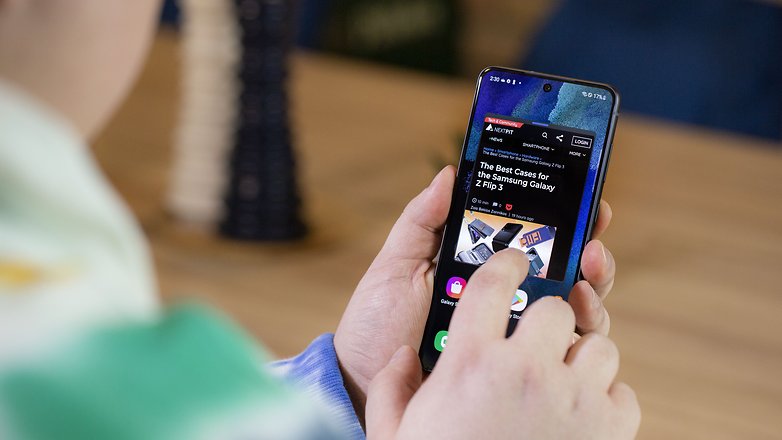
More than the operating systems, though, smartphone buyers are also investing in the device's ecosystems. Both Apple and Samsung offer a wide range of apps, services, and devices that work best with other gear from the same brand.
2021 saw the arrival of one extra category of products, with Apple's AirTag and Samsung's SmartTag adding object trackers to their respective ecosystems, using sensors like UWB to locate luggage, keyrings, and more.
Besides that, buyers have a considerable range of smartwatches and headphones to choose from both brands. Apple's ecosystem shine especially with its integration with the Mac PC family, while Samsung offers a wide variety of home appliances.
Galaxy S22 Ultra vs iPhone 13 Pro Max: Which one do I choose?
In the end, the buying choice will depend mostly on personal preferences. Do you care about pen support? Is Dolby Vision recording important to you?
While Samsung and Apple bridged some gaps in 2021, with the former offering one of the best software support policies in the Android market, and the latter (finally) bringing a high refresh rate screen to its flagship phone. In the S22 Ultra can be seen more as a fusion of the Galaxy S and Note lines, with the S Pen support for productivity tasks distancing itself from the Cupertino rival.
On the other hand, the iPhone 13 Pro Max offers a strong camera software solution, with features like Cinematic Mode, ProRes and Dolby Vision support, together with the sensor-shift image stabilization.
Samsung followers will argument that the S22 Ultra offers a more versatile camera, with a wider optical zoom range - 20x versus the 6x found in the iPhone 13 Pro Max - and a higher resolution sensor, but as we all know, megapixels doesn't necessarily mean better photos.
As with other features, the camera decision will depend on whether you are invested in the Apple ecosystem to take advantage of the professional options offered. And the same can be said to most other features like UWB (used in the AirTag and SmartTag trackers), integration with head/earphones, and other smart devices.
Samsung Galaxy S22 Full Coverage
| Samsung Galaxy S22 | Samsung Galaxy S22+ | Samsung Galaxy S22 Ultra |
|---|---|---|
|
|
Galaxy S22+ Review | Galaxy S22 Ultra Review |
|
|
|
|
|
|
||
|
|
||
Read also:
It is difficult to go wrong with either option. What is your opinion about the flagship models from Apple and Samsung? Do you think the S22 Ultra is a noteworthy successor to the Galaxy Note line? Share your views in the comments below!






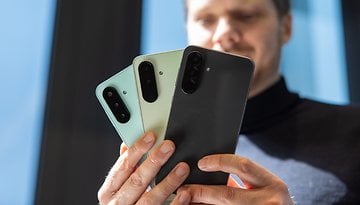













Neither. OSOM and GrapheneOS are doing more interesting things that actually respect the consumer.